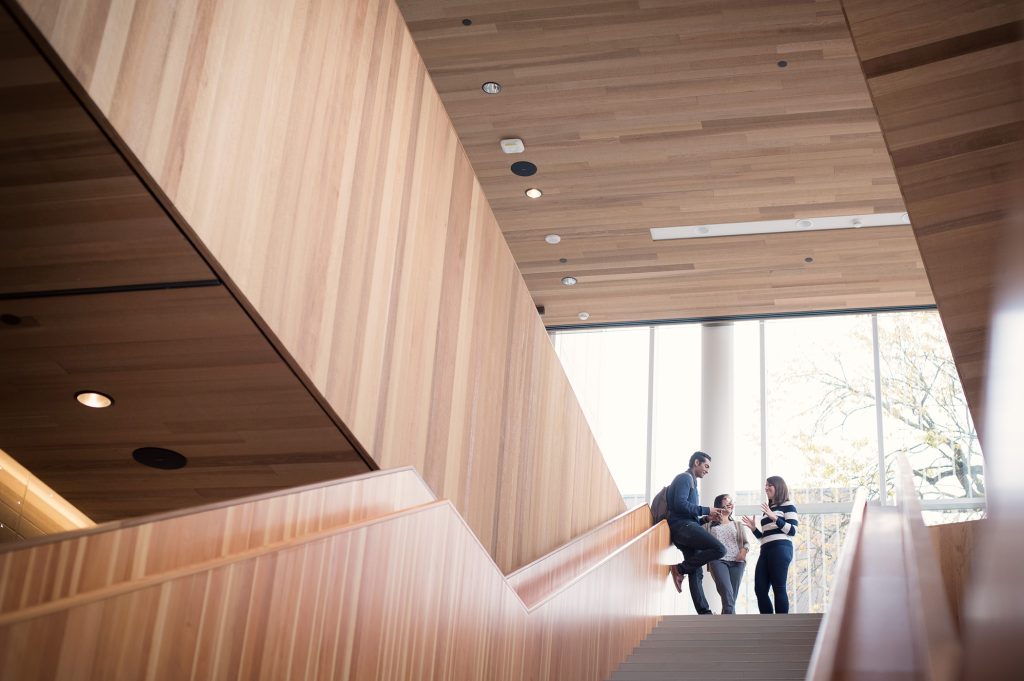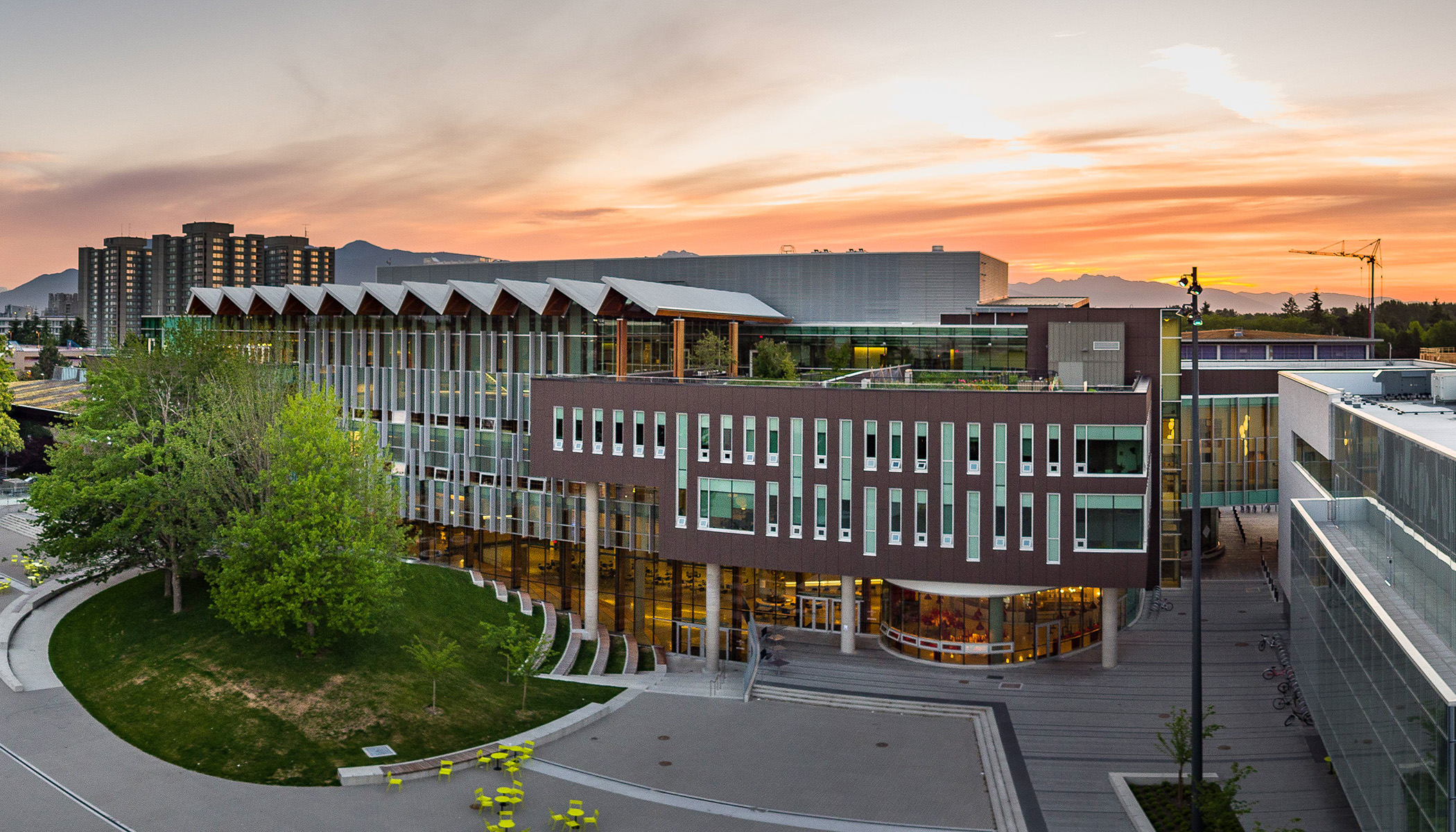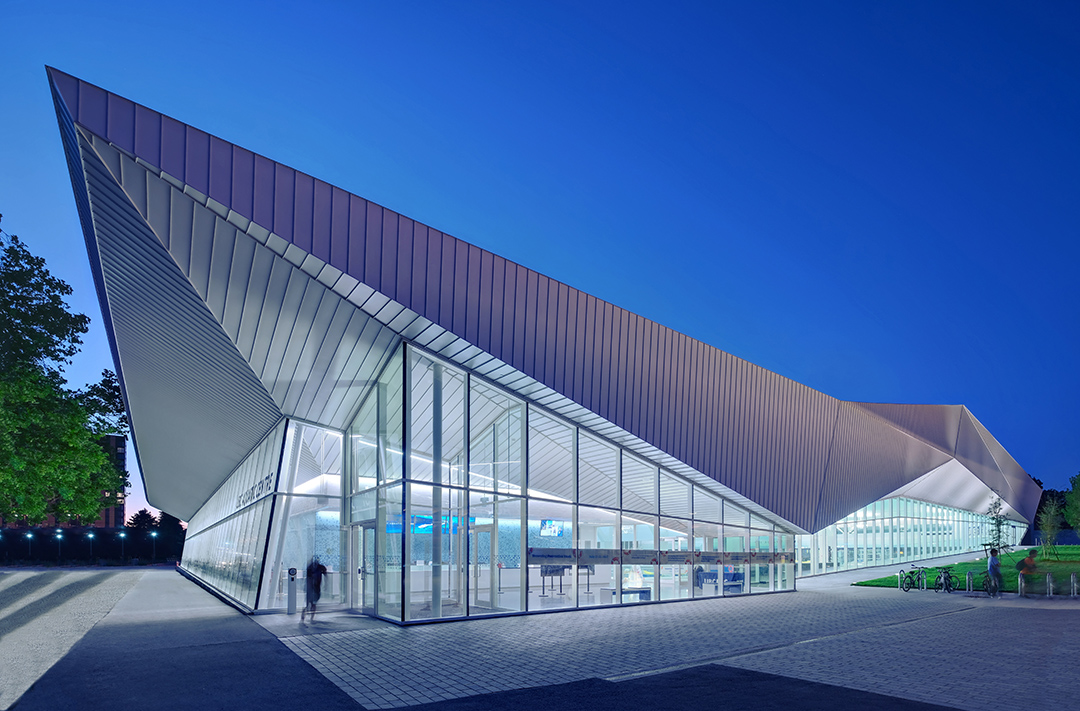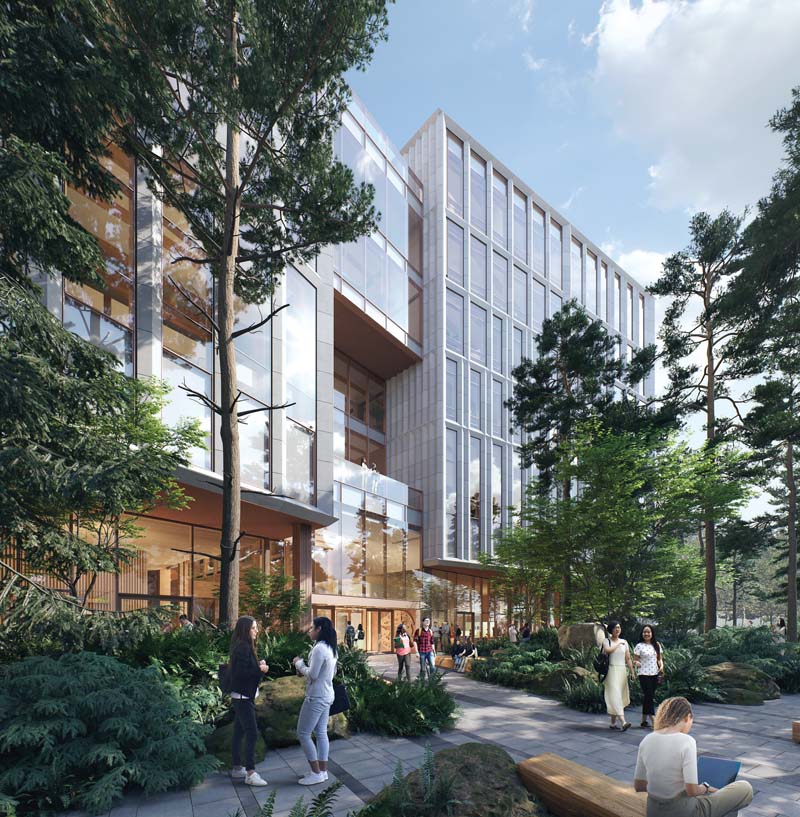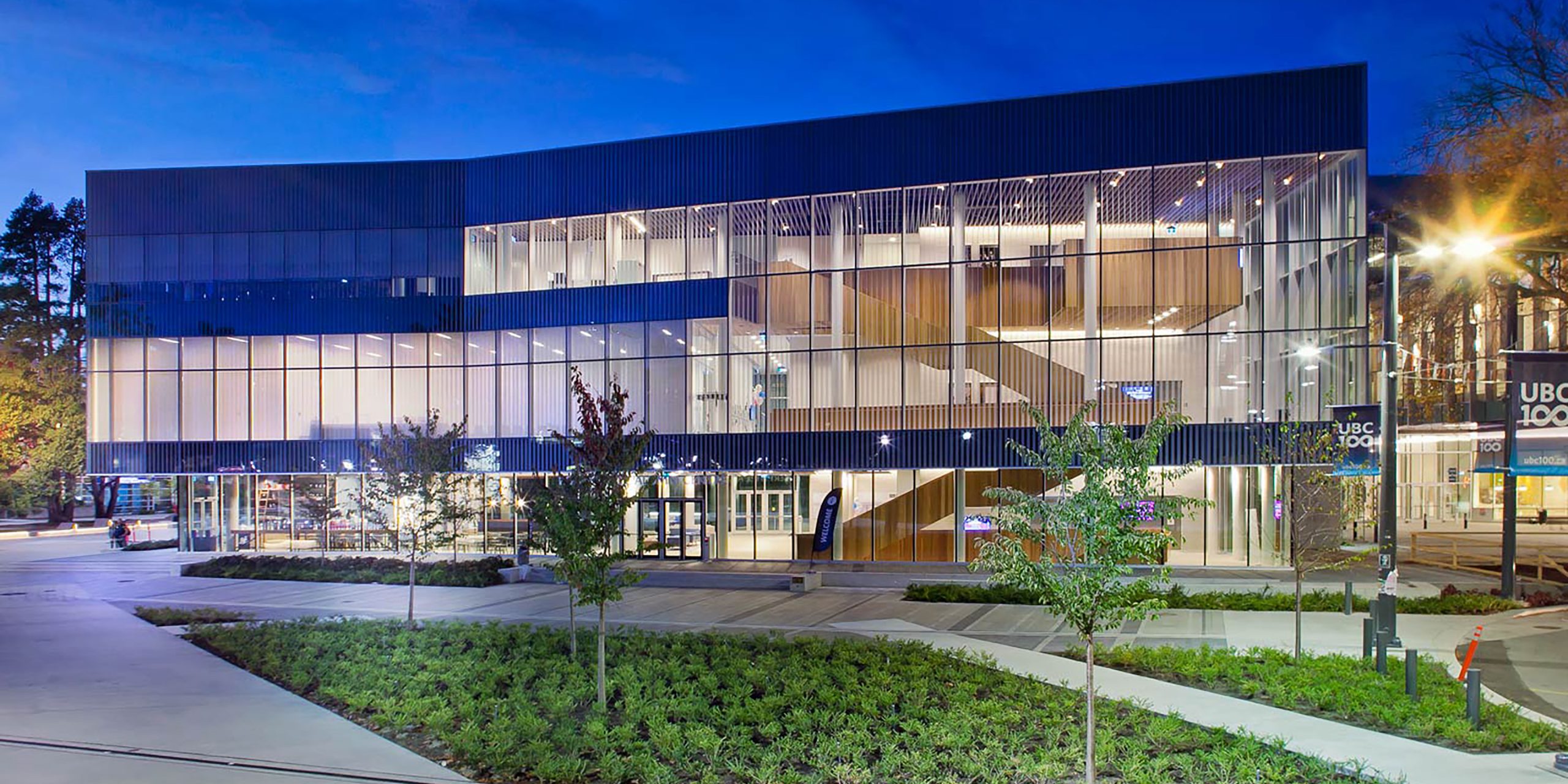

The Robert H. Lee Alumni Centre
Named after UBC Properties Trust’s founder, the Robert H. Lee Alumni Centre is the first stop for UBC alumni visiting their alma mater and provides a wealth of other rooms and services.
Working with the user groups, architects, and consultants, we needed to ensure the highest quality build and design while achieving user needs and minimizing the carbon footprint.
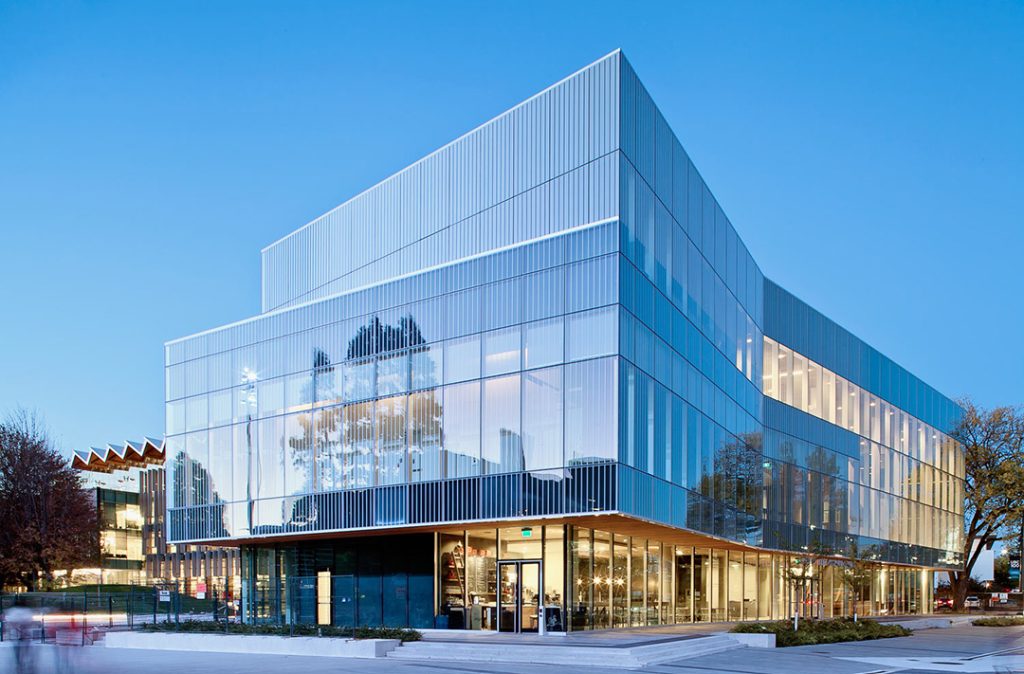
Sitting at the heart of UBC campus on University Boulevard, it has a warm and welcoming presence on campus, featuring a beautiful open atrium with a fireside lounge and a statue of Robert H. Lee himself. The atrium also presents an interactive digital screen where one can find any UBC alumni’s graduation photo. The UBC Welcome Centre, Loafe Cafe, and a meeting room are interconnected to allow free-flowing foot traffic through the atrium.
Douglas fir lines the 3-floor interior with a sculptural wood stair that offers views of a heritage elm tree at the east end of the building. 360° views of the entire campus can be seen from the second floor meeting rooms and the vast, multi-functional space with a capacity of up to 300. Located on the west side, the third-floor meeting room is where UBC’s Board of Governors hosts their meetings and also boasts spectacular campus views.
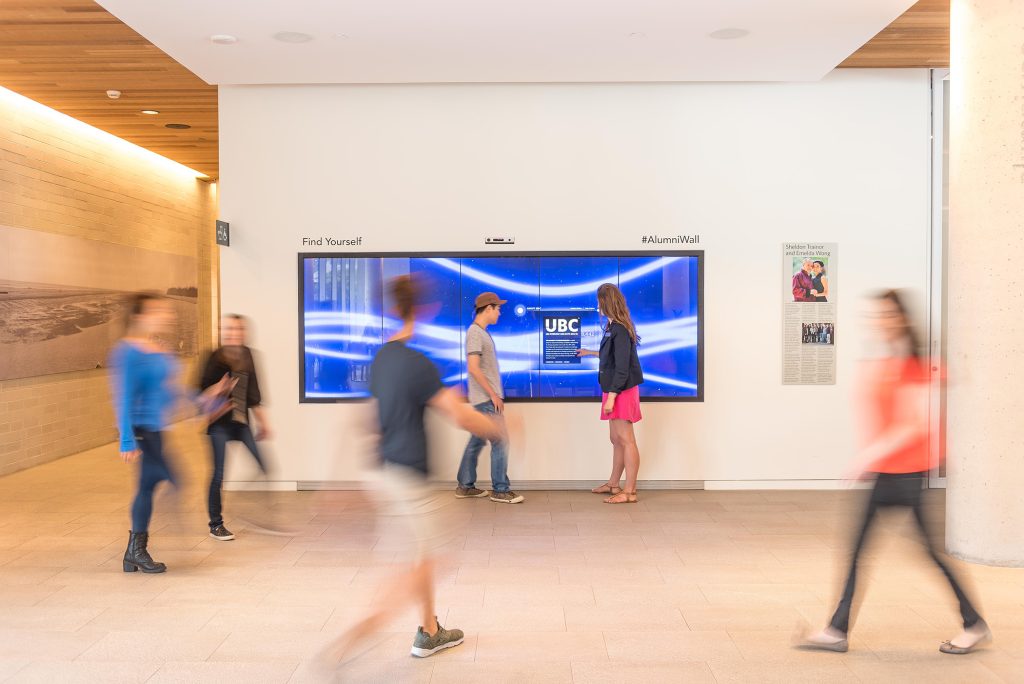
The building is a testament to UBC’s commitment to sustainability with energy-efficient features and design. Positioning and design allow ample natural light to flood the space, while materials were carefully selected to optimize energy conservation and to minimize the building’s footprint.
50% of the wood is harvested from sustainably managed forests, and 30% of construction materials were collected and made within 800m of the building site. The second and third floor use solar energy to heat the building. A spillway water feature sits in front of the building, filtering stormwater for contaminants prior to reaching the water table. Sensors are located around the building, constantly measuring energy consumption. The Centre saves approximately 164,000 litres of water per year, and 2,000 tons of carbon dioxide.
